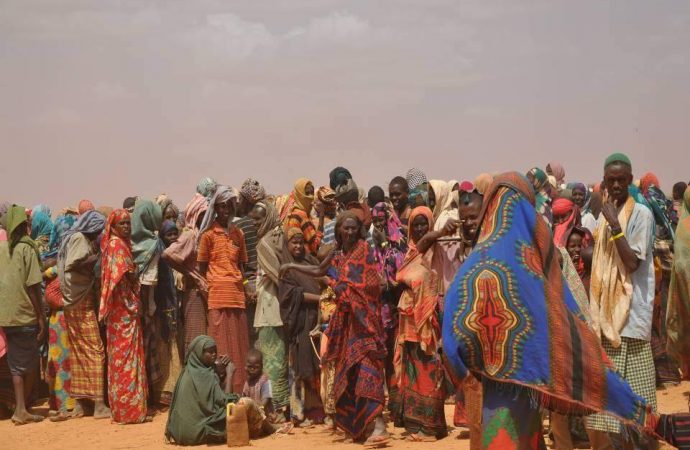Ever since I started to work as an anthropologist in a mental health institute for asylum seekers, refugees and migrants, who are mainly diagnosed with trauma-related disorders, I wondered how much trauma would affect their cultural identity. Second, I wondered how much of a role their cultural identity might play in the chance of running into traumas and their way of dealing with trauma. Third, I wondered how much cultural aspects of identity would influence the patient-clinician relationship. These are the questions I have tried to bring together as the rationale of my Ph.D. study.
Transcultural psychiatry
I work in transcultural psychiatry, a multidisciplinary field of psychiatrists, psychologists, psychiatric nurses, policy makers, and (medical) anthropologists. I studied Cultural Anthropology and non-Western Sociology at the University of Amsterdam, but when I graduated in 2002, it was not in medical anthropology. However, I am working in the medical field since 2004, which confronts me with discussions about biomedicine and culture, genetic and environmental factors, and protocolled treatment and out-of-the-box thinking. In this field, medical anthropologists are active and they get things done. Sometimes they are psychiatrist and anthropologist, such as Arthur Kleinman who is a key figure in the rise of transcultural psychiatry and who has brought forward that patients around the globe, of course including migrants, might have another explanation for their illness than their clinician (Kleinman, Eisenberg, Good, 1978). Anthropologists such as Byron Good have contributed to structural attention to cultural factors for interpreting illness representations (Good, 1996). This means that a method has been developed to ask for the patient’s point of view on the problems that have brought him or her to the clinic (Lewis-Fernández, 1996).
Working in transcultural psychiatry is balancing between several disciplines, which requires flexibility, but is a wonderful challenge in the practical elaboration of the knowledge I acquired at the University of Amsterdam. Let me give an example: When a Chinese woman in her thirties has been referred to a mental health institute because of depression and the general practitioner adds that she is the second child out of three in a farmer’s family, then the anthropologist would immediately consider the one-child policy in China and the desire for a son in a Chinese farmer’s family. This woman appeared to be the second child who was supposed to be a boy because the father risked a fine for having more than one child. The third child was a son. She had to work double shifts to pay back for the fine her father had to pay because she was born a girl. Imagine the effect of being humiliated, blamed for everything and being hated instead of being loved from early childhood on her self-esteem and social functioning and eventually on her depression. I have shown this example in many training sessions, but it rarely happens that medically trained think of asking about the one-child policy and gender of the children.
Overlooked cultural aspects
It seems there are different perspectives between the disciplines with different attitudes, different interests and different instincts in this field. Cultural aspects are often not well-investigated, or they may be regarded as exotic and many aspects of the patients’ life story are taken-for-granted (Kirmayer, 2003). It seems that mental health professionals have shaped an image of how a patient should look like, how he or she should behave, and what is normal and abnormal about mental health problems. I believe this image is restricted by the reduction of social complexity that is common to mankind. We need to reduce the number of questions that could be asked and we need to take certain things for granted, otherwise, our functioning would be reduced to an unacceptable level. Mental health professionals focus on symptoms, the kind of mental health problem and the way a patient needs to be helped. Why ask about the clan a Somali patient belongs to, when the psychiatric assessment and the trauma questionnaire point at posttraumatic stress syndrome, which might require certain types of therapy and medication? But what if one conversation about his clan and how this ethnic belonging has shaped his life strategies results in more activity and healthy behavior whereas the psychiatrist did not know what to do anymore (Groen, 2009)?
Migrant patients often drop-out of therapy or they do not take their medication as prescribed and not including information on cultural factors that might influence mental health problems may even lead to misdiagnosis. Knowledge developed in transcultural psychiatry permeates in general psychiatry. Jim van Os, a well-known psychiatrist who regularly brings new ideas in the field of psychiatry, stated that psychiatrists need to consider the identity of a patient and not to focus on the mental illness exclusively. On an international conference of the World Psychiatric Association in Berlin, a German scientific director of a mental hospital proclaimed that there is one neglected aspect of migrant patients that psychiatrist should focus on: cultural identity. A lot of work still needs to be done, in the development of culture-sensitive diagnosis and treatment, for instance.
On one of the publications of my Ph.D. study on trauma and cultural identity points out that refugee patients who experienced trauma find their cultural identity to be confused, which puts them in a cultural void (Groen et al., 2017). This does not only mean they have a hard time recognizing themselves, it also obstructs the healing process. The cultural identity reflects the inner core cultural values through which all meanings are transferred, including meanings of illness and health. But cultural identity before trauma also seems to influence the chance of running into mental health problems and the way patients conceive of them. If clinicians do not know about this influence, the chance of a diagnosis that is inaccurate or treatment that may fail is probably higher.
Simon Groen works at the De Evenaar, a Centre for Transcultural Psychiatry in Drenthe that offers mental health care for asylum seekers, refugees, and migrants. Write him at simon.Groen@ggzdrenthe.nl.
Good, B.J. Culture and DSM-IV: Diagnosis, knowledge, and power. Cult Med Psychiatry 1996; 20: 127-32.
Groen, S. Recognizing cultural identity in mental health care: Rethinking the Cultural Formulation of a Somali patient. Transcult Psychiatry 2009; 46: 451-62.
Groen, S.P.N., Richters, J.M., Laban, C.J., Devillé, W.L.J.M. Cultural identity among Afghan and Iraqi traumatized refugees: Towards a conceptual framework for mental health care professionals. Cult Med Psychiatry, online publication 20-01-2017.
Kirmayer, L.J. Failures of imagination: The refugee’s narrative in psychiatry. Anthropol Med 2003; 10: 167-85.
Kleinman, A., Eisenberg, L., Good, B. Culture, illness, and care: Clinical lessons from anthropological and cross-cultural research. Ann Intern Med 1978; 88: 251-88.
Lewis-Fernández, R. Cultural formulation of psychiatric diagnosis. Cult Med Psychiatry 1996; 20: 133-44.
Image Credit: Cate Turton / Department for International Development’



